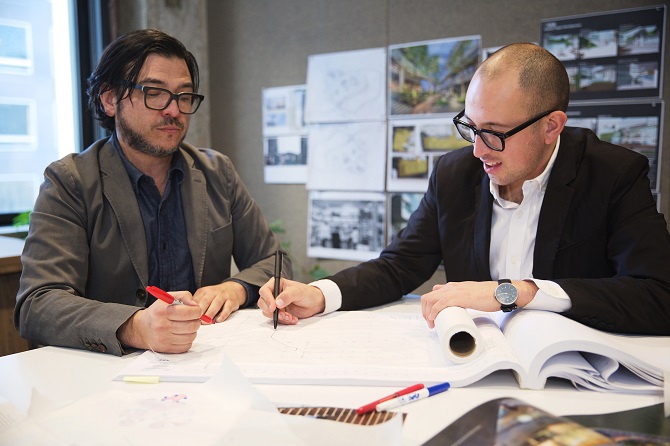Downtown-based architecture firm Jerde has absorbed Chinatown-based landscape architecture and design firm Superjacent. Terms of the deal were not disclosed.
All Superjacent employees and executives have been hired by Jerde.
“There is tremendous demand, not just from our clients, but industry-wide, to design unique and innovative public spaces within projects – what we’ve always referred to as the spaces between the buildings where people spend time,” said Jerde Chief Executive Paul Martinkovic in a statement. “Because many of our designs, whether it be Namba Parks in Japan or Oxígeno in Costa Rica, emphasize that connection between people and nature -—we see this strategic business move as a way to enhance our services and enter new and exciting markets.”

Jerde has done more than 120 projects on six continents including the Bellagio in Las Vegas, Pacific City in Huntington Beach, Langham Place in Hong Kong, Roppongi Hills in Tokyo, D-Cube City in Seoul and a makeover of Santa Monica Place in Santa Monica.
Superjacent projects include a masterplan for the City of Compton and a creative office campus in the Arts District.
“We were very attracted to Superjacent based upon our shared values of placemaking and designing unique public spaces,” said John Simones, Jerde chairman and design director, in a statement. “We are very excited to bring the Superjacent team onboard. Landscape and architecture – working together as one – creates a totality where ideas and experiences flow indoors and out.”
Tony Paradowski and Chris Torres, Superjacent’s founders and partners, are now vice presidents and design principals at Jerde.
“We want Superjacent Studio of Jerde to create landscapes that celebrate the unique cultural ecology of each project,” Torres said in a statement. “Rapid urbanization and the effects of climate change are creating new challenges for cities and landscapes with an ever growing need to develop all projects from a sustainable and ecological posture. We see opportunities in these challenges to not only create resilient landscapes and cities but do so by celebrating the histories and traditions that make every place unique.”
Commercial real estate reporter Hannah Madans can be reached at [email protected]. Follow her on Twitter @HannahMadans

